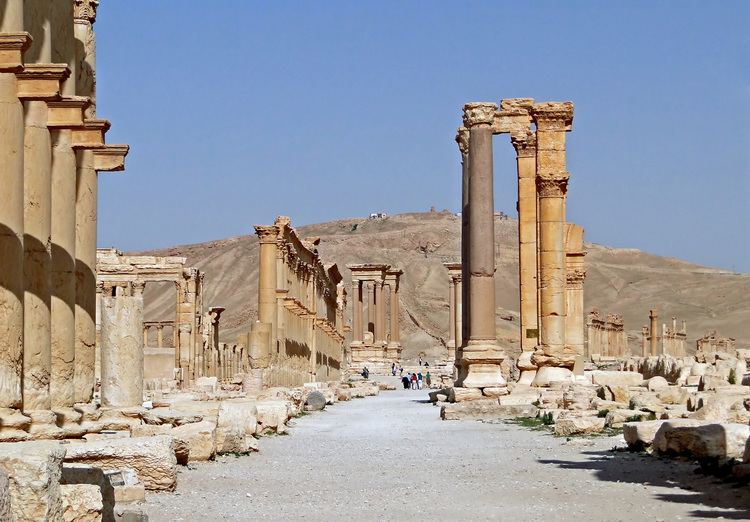 | ||
In Roman city planning, a decumanus was an east-west-oriented road in a Roman city, castrum (military camp), or colonia. The main decumanus was the Decumanus Maximus, which normally connected the Porta Praetoria (in a military camp, closest to the enemy) to the Porta Decumana (away from the enemy).
Contents
Map of Decumanus, Palmyra, Syria
This name comes from the fact that the via decumana or decimana (the tenth) separated the Tenth Cohort from the Ninth in the legionary encampment, in the same way as the via quintana separated the Fifth Cohort from the Sixth.
In the middle, or groma, the Decumanus Maximus crosses the perpendicular Cardo Maximus, the primary north-south road that was the usual main street. The Forum is normally located close to this intersection of the Decumanus Maximus and the Cardo Maximus.
Examples
In the ancient Roman city of Barcino (present day Barcelona, Spain), the Decumanus Maximus started at the Roman gate in front of the current Plaça Nova square, which is the only Roman gate extant. In present-day Croatia within the city of Split is the UNESCO Roman monument, Diocletian's Palace. This city built by Emperor Diocletian exhibits the characteristic Roman orthogonal street system with the Decumanus Maximus connecting the west Iron Gate to the east Silver Gate. At the present day city of Umm Qais, Jordan, the decumanus is extant running east-west for approximately one kilometre with its ancient flagstones extant; the name of this Roman city is Gadara. Another fine example is the "Straight Street", Via Recta in Damascus, which is 1,500 metres long, connecting the eastern and western gates.
In Beirut's Central Business District, Rue Weygand, which runs east-west, still follows the ancient Roman decumanus.
In Florence, the Decumanus is preserved as the streets Via Strozzi, Via Speziali and Via del Corso in the city's old centre. Although these streets have different names they form a continuous line with a split between the Via Strozzi and Via Speziali by the Palazzo Strozzi. In Roman times, these 3 streets formed the Decumanus of Florentina, the name of the Roman colonia. The Via Roma and the Via Calimala are formed from the ancient Cardo and what was once the Forum in ancient Florence is now the Piazza della Repubblica.
In Naples, there are still existent, three main decumani which are from west to east:
